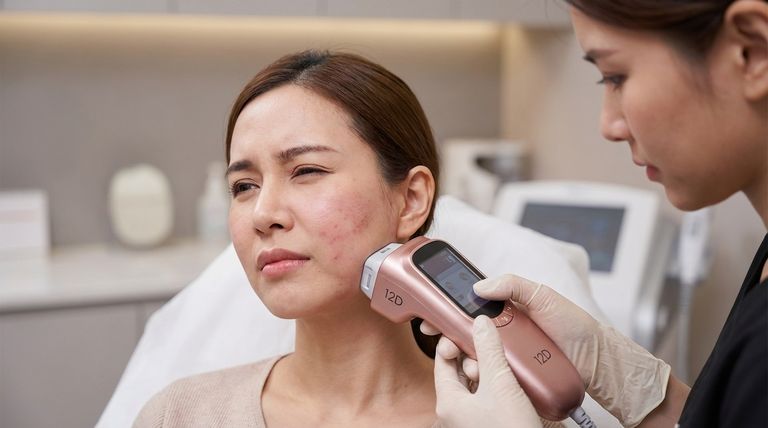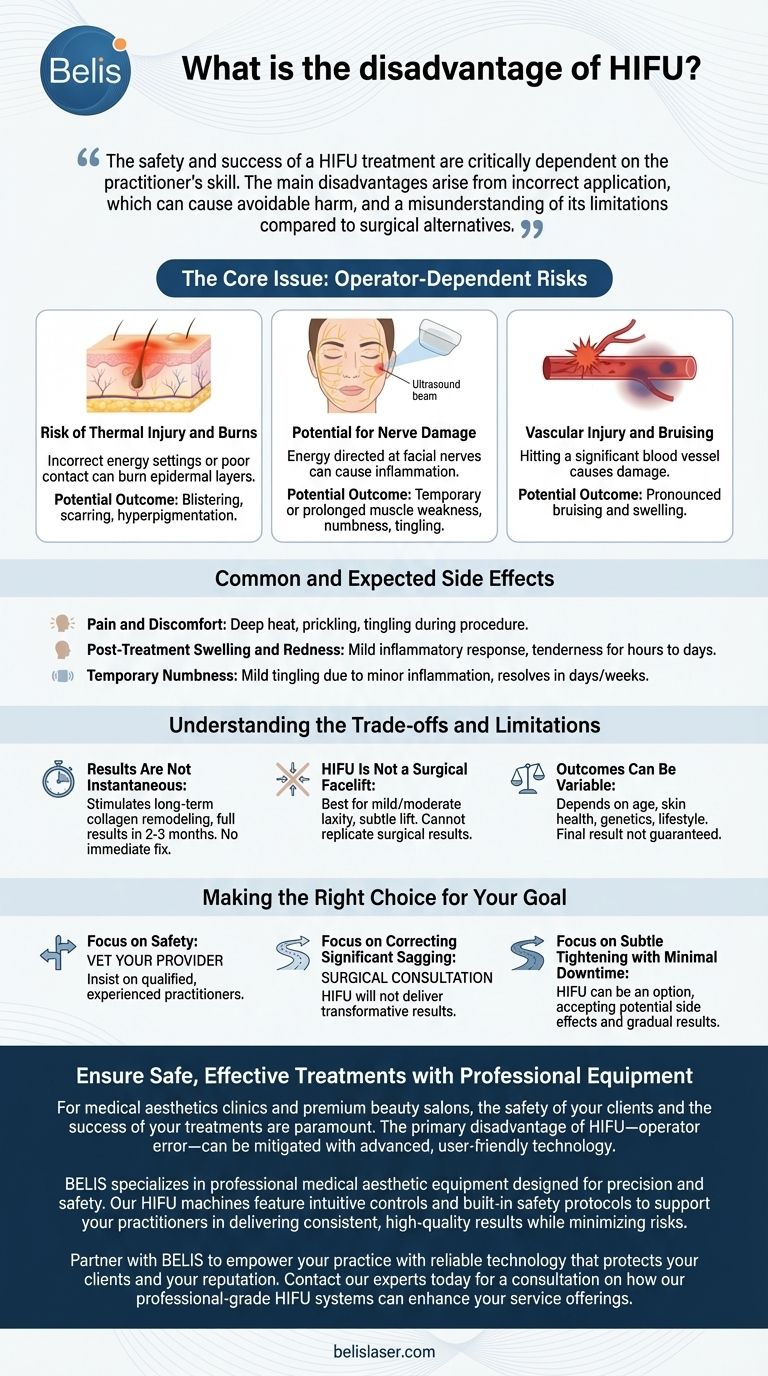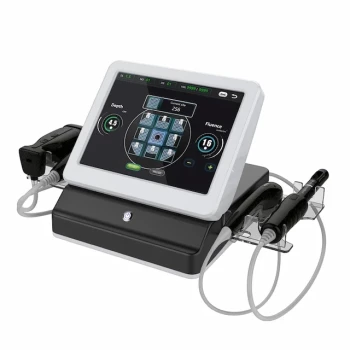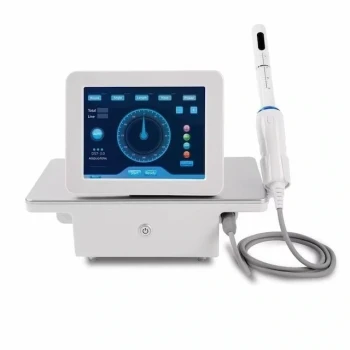While often effective for skin tightening, the primary disadvantages of High-Intensity Focused Ultrasound (HIFU) are not inherent to the technology itself, but stem from the risk of operator error. When performed incorrectly, HIFU can lead to significant side effects, including skin burns and damage to underlying nerves or blood vessels.
The safety and success of a HIFU treatment are critically dependent on the practitioner's skill. The main disadvantages arise from incorrect application, which can cause avoidable harm, and a misunderstanding of its limitations compared to surgical alternatives.

The Core Issue: Operator-Dependent Risks
The most severe disadvantages of HIFU are almost always a direct result of improper technique. The device delivers potent, focused energy, and its safe application requires a deep understanding of facial anatomy.
Risk of Thermal Injury and Burns
HIFU works by creating precise thermal coagulation points deep within the skin to stimulate collagen. If the practitioner uses the wrong settings or fails to maintain proper contact with the skin, this energy can be delivered too superficially.
This misapplication of energy can overheat and burn the epidermal (outer) layers of the skin, potentially leading to blistering, scarring, or hyperpigmentation.
Potential for Nerve Damage
The human face has a complex network of motor and sensory nerves. An experienced provider knows the precise location of these nerves and how to avoid them.
If the ultrasound energy is directed at a nerve, it can cause inflammation or damage. This may result in temporary or, in rare cases, prolonged muscle weakness, numbness, or tingling in the treated area.
Vascular Injury and Bruising
Just as with nerves, blood vessels can be inadvertently targeted. While less severe than nerve damage, hitting a significant vessel can cause pronounced bruising and swelling that goes beyond the typical post-treatment effects.
Common and Expected Side Effects
Beyond the risks of improper application, HIFU has several common side effects that you should anticipate, even with a perfect procedure. These are generally temporary.
Pain and Discomfort
HIFU is not a painless treatment. Most patients describe a sensation of deep, intermittent heat and a prickling or tingling feeling as the energy is delivered. The level of discomfort varies by individual and the area being treated.
Post-Treatment Swelling and Redness
A mild inflammatory response is a normal part of the healing process that HIFU initiates. You can expect some minor swelling, redness, and a feeling of tenderness in the treated area for a few hours to several days.
Temporary Numbness
A feeling of mild numbness or tingling in the treated zones is also common. This is typically due to minor inflammation around nerve endings and almost always resolves on its own within a few days or weeks.
Understanding the Trade-offs and Limitations
To make an informed decision, you must understand what HIFU cannot do and the trade-offs involved compared to other procedures.
Results Are Not Instantaneous
While you might see a minor initial plumping effect from inflammation, the true results of HIFU are not immediate. The treatment works by stimulating long-term collagen remodeling, a process that takes two to three months to become fully apparent.
HIFU Is Not a Surgical Facelift
This is the most critical limitation to understand. HIFU is best suited for individuals with mild to moderate skin laxity. It provides a subtle lift and tightening effect. It cannot replicate the dramatic and long-lasting results of a surgical facelift, which physically removes excess skin and repositions underlying tissues.
Outcomes Can Be Variable
The final result is not guaranteed. It depends heavily on your body's unique ability to produce new collagen, which is influenced by factors like age, overall skin health, genetics, and lifestyle habits like smoking or sun exposure.
Making the Right Choice for Your Goal
To determine if HIFU is right for you, consider your primary objective and tolerance for risk.
- If your primary focus is safety: Your entire effort should be on vetting your provider. Insist on a qualified and highly experienced practitioner, such as a board-certified dermatologist or plastic surgeon, who can show you a portfolio of their own work.
- If your primary focus is correcting significant sagging: A surgical consultation is likely a more appropriate path. HIFU will not deliver the transformative results required for advanced skin laxity.
- If your primary focus is subtle tightening with minimal downtime: HIFU can be an excellent option, provided you accept the potential side effects and understand its results are modest and will appear gradually.
Ultimately, understanding the full scope of HIFU's disadvantages and limitations empowers you to make a decision that aligns with your personal aesthetic goals and safety standards.
Summary Table:
| Key Disadvantage | Primary Cause | Potential Outcome |
|---|---|---|
| Thermal Injury & Burns | Incorrect energy settings or application | Blistering, scarring, hyperpigmentation |
| Nerve Damage | Energy directed at facial nerves | Muscle weakness, numbness, tingling |
| Vascular Injury | Hitting a blood vessel | Pronounced bruising and swelling |
| Variable Results | Individual collagen response & lifestyle | Unpredictable tightening and lifting |
| Not a Surgical Alternative | Inherent technology limitation | Cannot address significant skin laxity |
Ensure Safe, Effective Treatments with Professional Equipment
For medical aesthetics clinics and premium beauty salons, the safety of your clients and the success of your treatments are paramount. The primary disadvantage of HIFU—operator error—can be mitigated with advanced, user-friendly technology.
BELIS specializes in professional medical aesthetic equipment designed for precision and safety. Our HIFU machines feature intuitive controls and built-in safety protocols to support your practitioners in delivering consistent, high-quality results while minimizing risks.
Partner with BELIS to empower your practice with reliable technology that protects your clients and your reputation.
Contact our experts today for a consultation on how our professional-grade HIFU systems can enhance your service offerings.
Visual Guide

Related Products
- 12D HIFU Machine Device for Facial HIFU Treatment
- 9D 7D HIFU Vaginal RF Lifting Treatment
- 7D 12D 4D HIFU Machine Device
- 4D 12D HIFU Machine Device for Skin Tightening
- 22D HIFU Machine Device Facial Machine
People Also Ask
- How long does it take for HIFU to show results? See the Dual-Phase Timeline for Natural Lifting
- How frequently should you do HIFU? Optimize Your Results with the Right Schedule
- What are the benefits of HIFU machine? Achieve Non-Surgical Skin Lifting & Tightening
- How do I maximize my HIFU results? A Guide to Optimal Lifting and Tightening
- What is the best frequency for HIFU treatment? Achieve Lasting Lifting & Tightening Results



















